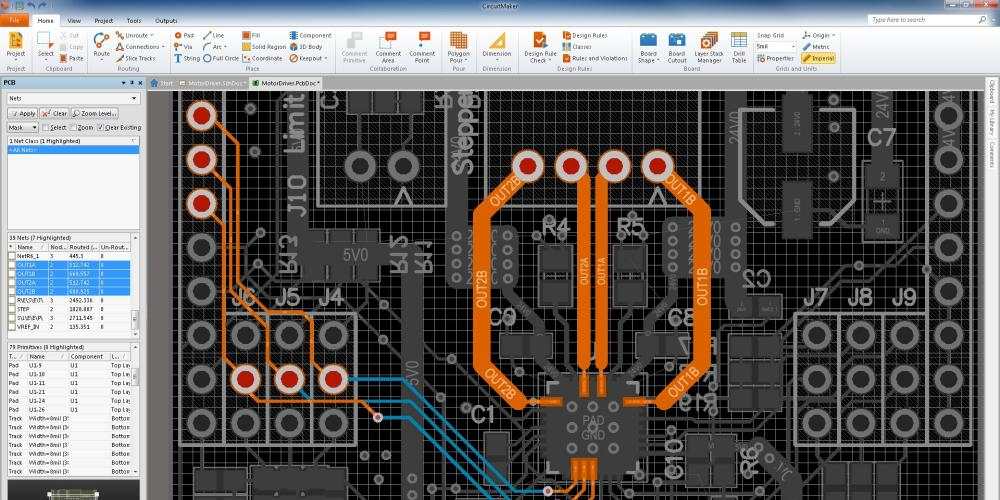Circuit makers, often referred to as electronic circuit designers or engineers, play a crucial role in the field of electrical engineering. These individuals are responsible for designing, testing, and optimizing electronic circuits that form the backbone of various electronic devices we use in our daily lives. Let’s dive into the details.
Electronic circuits are composed of interconnected components such as resistors, capacitors, inductors, transistors, and integrated circuits. Circuit makers use their knowledge of electrical principles and design techniques to create circuits that meet specific requirements and functionality.
The design process typically involves several key steps:
Requirements Analysis: Circuit makers begin by understanding the requirements of the electronic device or system they are designing for. This includes specifications such as power consumption, speed, size, and other performance parameters.
Schematic Design: Using schematic capture tools, circuit makers create a visual representation of the circuit. This schematic diagram illustrates how components are connected and their relationships. It serves as a blueprint for the actual circuit.
Component Selection: Choosing the right components is crucial for the performance and reliability of the circuit. Circuit makers consider factors such as component tolerance, temperature stability, and cost while selecting components.
Simulation: Before physically building the circuit, engineers often simulate its behavior using specialized software. This helps identify potential issues and optimize the design for performance and efficiency.
PCB Layout: Once the schematic is finalized, circuit makers create a printed circuit board (PCB) layout. This involves arranging components on the board in a way that minimizes signal interference and ensures efficient use of space.
Prototyping: A prototype of the circuit is built and tested in the lab. This step helps validate the design and identify any unforeseen issues that may arise in a real-world environment.
Testing and Iteration: Circuits undergo rigorous testing to ensure they meet the specified requirements. Circuit makers may need to iterate on the design, making adjustments to improve performance or address any issues that arise during testing.
Documentation: Comprehensive documentation is created to provide detailed information about the circuit design. This documentation is crucial for future reference, troubleshooting, and mass production.
Circuit makers work in various industries, including consumer electronics, telecommunications, medical devices, and automotive. Their expertise is essential for advancing technology and creating innovative electronic products that enhance our daily lives.
Importance of Circuit Makers
Innovative Conceptualization:
Circuit makers are the creative minds behind the initial concept of electronic devices. They envision and conceptualize the intricate network of components that will eventually form a functional and efficient circuit
Problem Solvers Extraordinaire:
In the process of designing electronic circuits, circuit makers act as problem solvers extraordinaire. They encounter a myriad of challenges, from optimizing power consumption to ensuring signal integrity. Each hurdle requires a unique and ingenious solution. The ability to troubleshoot and devise innovative fixes is a hallmark of a skilled circuit maker.
Masterful Schematic Design:
Schematic design is the language of circuit makers. They skillfully translate abstract ideas into detailed schematics, which serve as the visual roadmap for the circuit’s construction.
Virtual Architects with Simulation:
Before the first physical prototype is ever constructed, circuit makers leverage simulation tools to create a virtual representation of their design. This virtual testing ground allows them to predict the circuit’s behavior, identify potential pitfalls, and refine the design iteratively. It’s a digital playground where ideas are stress-tested before being brought to life.
Precision in PCB Layout:
The printed circuit board (PCB) layout is a canvas where circuit makers showcase their precision and spatial acumen. Efficiently arranging components on the PCB involves a delicate dance of optimization, considering factors such as signal integrity, electromagnetic interference, and thermal management. The layout is a visual manifestation of the circuit maker’s strategic prowess.
Circuit makers are the unsung heroes shaping the backbone of our technologically driven society. Their blend of creativity, technical expertise, and problem-solving prowess propels the world of electronics forward, paving the way for innovations that redefine how we live and interact with the world around us.

